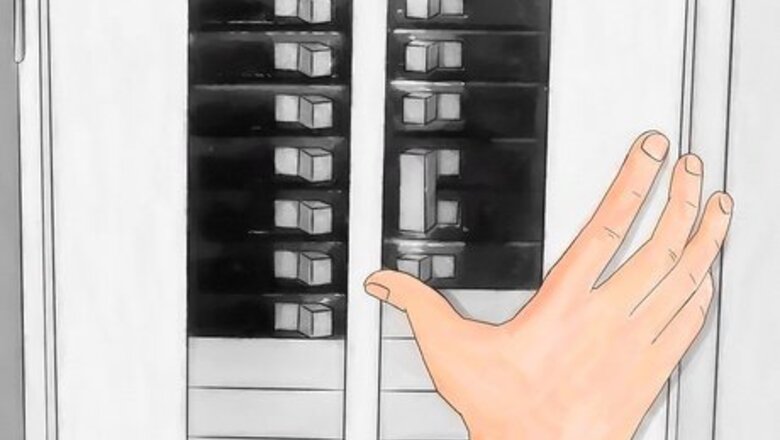
views
Getting Started
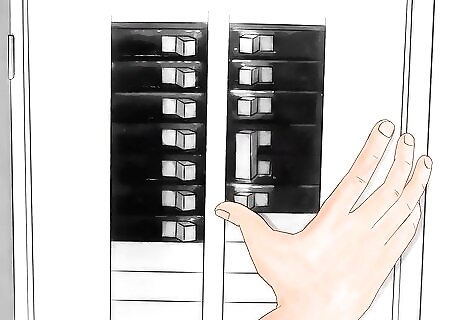
Shut off the power, water, gas, and other utilities to the area you are working on. If you want to remove drywall, it's very important that you shut off any utilities in the area of the house that you're working on. Water and electricity should be shut off at the source before you start working on the drywall.
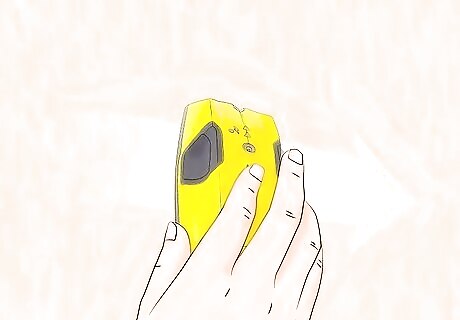
Use a stud-finder to locate obstacles. Any time you're going to start digging around in a wall, it's important to use a stud-finder and find out exactly what you're messing around with. Most modern stud-finders will come with pipe and electrical settings, meaning that you can use it to identify and locate any fixtures that might be built into the wall, to make sure you can avoid them successfully. Mark areas with studs or fixtures with tape and work carefully around them, working toward the sensitive spots. If you don't have a stud finder, go around the room carefully knocking on the wall. Hollow sounding spots should be unobstructed drywall, but harder knocking spots will have studs and possibly piping throughout. Use caution in those areas, slowing working in that direction.
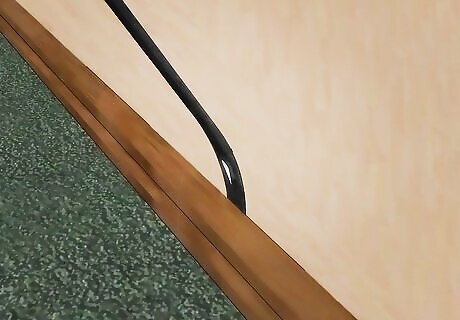
Remove the molding first. Usually baseboards and ceiling moldings must be removed first, before you can access the drywall and begin removing it. This is done with a flat bar or other prying tool. Both types of moldings are usually affixed with nails, and should be pried from the walls slowly, working from nail to nail. Do the same thing with any molding or trim around windows and doors before you access the drywall. Use a utility knife to score the seam between moldings and drywall. The seam is typically filled with paint, caulk, or some combination of adhesive. If you want to reuse the molding, score the drywall edge of the seams to help fracture the wall where the molding and drywall surface will split.

Remove the trim from electrical devices. Make sure the power is off on these circuits, then carefully remove the trim from around any electrical devices in the area, including wall switches, receptacles, and thermostats. The drywall is usually fit around the device boxes underneath these covers so they won't be damaged when removing the drywall.
Removing Drywall

Look for drywall screws. Depending on the age of the house you're working in, the drywall will either be nailed or screwed into the studs. To remove drywall that's nailed in, you'll simply start prying up the sections of drywall, piece by piece. If, on the other hand, the drywall is screwed in, you might need to take a bit more time to remove the screws before you start prying it loose. Screws that are bedded in joint compound can be very difficult to locate and remove. Drywall screws can sometimes be removed with a Philips-head screwdriver, but depending on the condition of the wall, this may be more hassle than it's worth. Look at the screws and the condition of the drywall itself. If they're easy to remove, go ahead and remove them. It'll mean less elbow grease down the road. If the drywall is wet, or if the screws are mangled, rusted, or otherwise difficult to remove, go ahead and start prying the drywall loose as if they were simply nailed in.
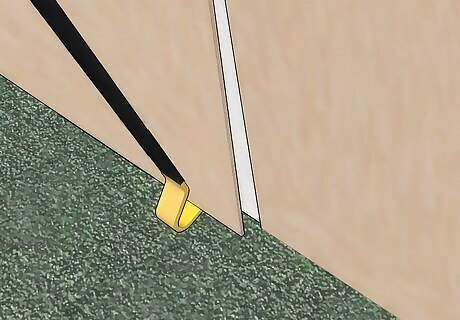
Start at the bottom of undamaged drywall. Standard drywall installation is done using 4x8 ft panels. Those are usually mounted horizontally with staggered joints, with two sections used to cover a standard 8 feet (2.4 m). section of wall. These will be fastened into the vertical wooden studs, centered at 16 or 24 inch (40.6 or 61.0 cm) intervals. For unsoiled drywall, use a pry bar to begin prying the bottom of the panel away from these studs, allowing removal of the entire sheet. Pushing the short end of the flat bar up under the bottom of the panel allows for using the long end as a lever, making the initial prying easy.
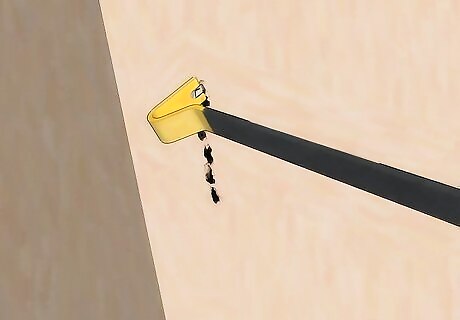
Continue prying the side of the section loose. Identify a section of wall roughly 2 feet (0.6 m) above the ground and 8 inches (20.3 cm) from the end of the wall, making note to avoid electrical outlets. Using a hammer claw, make a foot long vertical series of holes. Basically, what you want to do is open up some space to grab hold of the drywall and pull it loose. It's not rocket-science: knock some holes in at the side and give yourself something to hang onto.
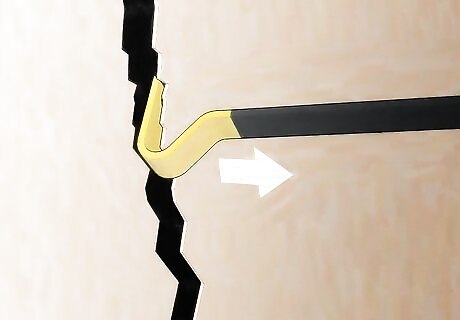
Pull a section loose. Grab at the upper and lower holes you've cut and pull a large chunk of drywall off the nails on the nearby stud. Keep moving along the wall, pulling chunks loose as you go. When the drywall breaks on a stud, make another vertical hole in adjacent gap and continue removing the drywall by hand.
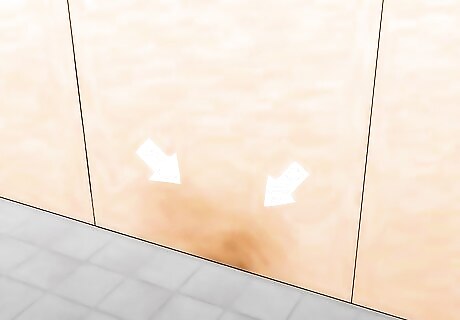
Start in the center of water-damaged drywall. For water-damaged drywall, a good strategy is to open a hole at the midpoint of the 14.5 inch (36.8 cm) space between studs. Using a sledge or a battering ram of some kind can usually be effective in this circumstance. If the water-damage extends to the upper panel, the same action will usually cleanly separate the wall from the ceiling.
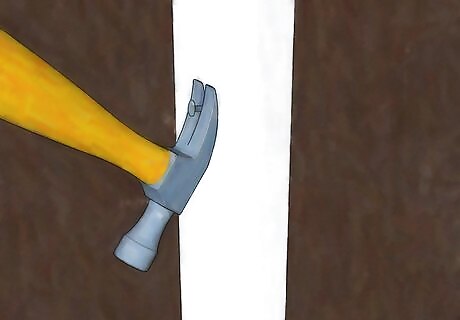
Remove the drywall nails left on the studs. Use the flatbar to pry loose any nails remaining on the studs, or take care to unscrew the screws remaining in the wood. A pry bar or a hammer claw should be fine for the job.



















Comments
0 comment